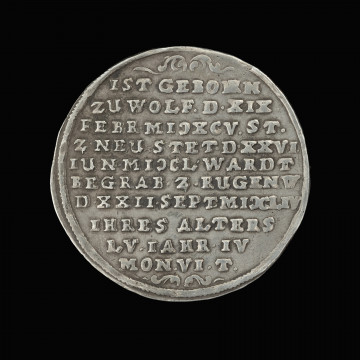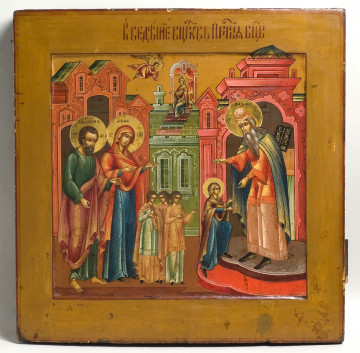
Epergne
Museum of King Jan III's Palace at Wilanów
Part of the collection: Artistic glass
A small flat vial with a wooden cap, made of hyalith, with gilded decoration that is considerably abraded. The vessel was manufactured by blowing into a form which gave the glass bubble the initial shape. Such items with form-based shapes, often additionally embellished through grinding and engraving, made of thick tinted glass were extremely popular in the 19th century. The glass mass was available in many new colours and hues, including the non-transparent black which was soon recognised as exceptionally elegant and desirable. Vessels made of this material – including this vial from Wilanów – often displayed gilded decorations which looked impressive against the black surface. Unfortunately, the delicate arabesque decoration became considerably abraded, but its traces remain visible. It was drawn with a quill, not a brush, which allowed to obtain very thin lines (later steel pens were also used).
The black non-transparent glass of which the vase is made was invented in the 19th century by Georg Franz August Longueval, count of Buquoy (1781–1851). He was a mathematician, a physicist, a chemist, a philosopher as well as an owner of several glass factories. It received the name of hyalith, inspired by the Greek word for “glass” (“hyalos”), from the very inventor of this technical novelty. Its production started in 1817. Owing to the unique hue, products made of hyalith, such as cups, vials, vases, tea containers or candle-holders, quickly became fashionable and widely in-demand. The popularity of hyalith, however, lasted for a relatively short period, i.e. until the 1840s, giving place to other types of glassware (mainly mass tinted glass of various colours), though hyalith vessels could still be found in the market.
A part of the vial’s decoration was made at a later stage with the use of brazing and these lines can be easily recognised, since they are thicker and less precise. The wooden cap is not original, either. These are the traces of preservation activities.
Author / creator
Dimensions
entire object: height: 5,2 cm, width: 7,3 cm
Technique
gilding,manual forming
Material
wood
Owner
Museum of King Jan III's Palace at Wilanów
Identification number
Location / status

Museum of King Jan III's Palace at Wilanów

1654
National Museum in Szczecin

XIX century, koniec XIX w.
Castle Museum in Łańcut
DISCOVER this TOPIC
National Museum in Szczecin
DISCOVER this PATH
Educational path